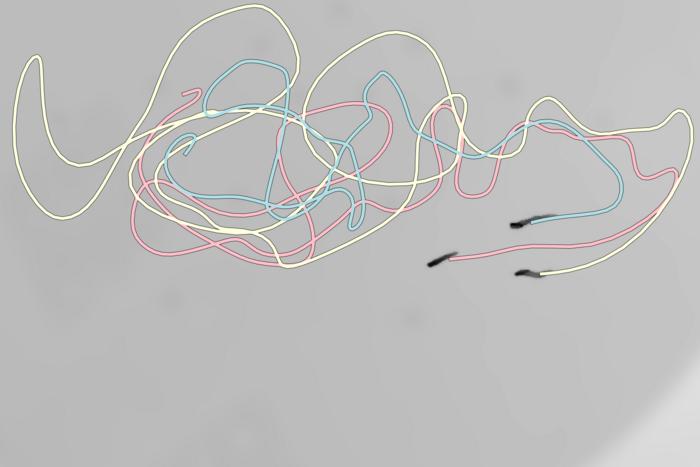In the intricate dance of nature, collective behavior often emerges from the interactions of individual entities, giving rise to mesmerizing patterns and structures. Among the myriad species exhibiting such behavior, zebrafish (Danio rerio) have captured the attention of physicists seeking to unravel the mysteries of group dynamics. In a groundbreaking study conducted by researchers from Heinrich Heine University Düsseldorf and the University of Bristol, the enigmatic behavior of zebrafish schools has been illuminated, revealing that the magic number for coordinated movement lies in the simplicity of three. In this article, we delve into the fascinating world of collective behavior, exploring how the coordinated movements of zebrafish shed light on fundamental principles underlying group dynamics.
Deciphering the Collective: From Physics to Fish: The quest to understand collective behavior transcends disciplinary boundaries, drawing physicists into the realm of aquatic exploration. Driven by a curiosity to unravel the mysteries of group dynamics, researchers embarked on a journey to investigate the schooling behavior of zebrafish, employing methods rooted in multi-particle physics. Equipped with synchronized cameras and a keen eye for detail, the team embarked on a quest to uncover the secrets of zebrafish schools, seeking to delineate the minimum group size required for coordinated movement to emerge.
The Power of Three: Unveiling the Key to Coordination: In their quest for understanding, physicists systematically observed the swim trajectories of zebrafish across varying group sizes, ranging from two to fifty individuals. What emerged from their meticulous analysis was a remarkable revelation: the coordinated movement of zebrafish schools hinges on the simple principle of threes. While pairs of fish displayed distinct behaviors, it was groups of three that exhibited synchronized movement akin to large schools. Whether swimming side by side or in a circular formation, three fish seemed to form a cohesive unit, paving the way for coordinated group dynamics.
Insights into Collective Behavior: Transcending Species and Boundaries: Beyond the confines of the aquatic realm, the findings hold implications for understanding collective behavior across diverse species and ecosystems. From schools of fish to flocks of birds and swarms of insects, the principles elucidated by zebrafish schooling behavior offer valuable insights into the dynamics of collective motion. As Professor Dr. C. Patrick Royall aptly notes, “Practically, three fish form a school, but two are not enough.” This simple yet profound observation resonates across species boundaries, highlighting the universal principles underlying collective behavior in nature.
Bridging Theory and Experiment: A Collaborative Endeavor: The journey towards unraveling the mysteries of collective behavior was marked by collaboration and interdisciplinary synergy. From the experimental setup in Bristol to the theoretical insights in Düsseldorf, the research endeavor exemplified the power of collaboration in pushing the boundaries of scientific inquiry. Through meticulous experimentation and sophisticated simulations, researchers elucidated the intricate dynamics of zebrafish schooling, paving the way for future exploration into the collective behavior of diverse species and ecosystems.
Exploring New Frontiers in Collective Dynamics: As the study of collective behavior continues to evolve, researchers are poised to explore new frontiers in understanding the dynamics of group motion. With applications ranging from ecology to social dynamics, the insights gleaned from zebrafish schooling behavior hold promise for addressing complex challenges in diverse fields. As Professor Löwen aptly summarizes, “We will see whether the simple limit of the number three then also applies” to human group behavior, opening new avenues for exploration and discovery.
In the intricate tapestry of nature, the coordinated movements of zebrafish schools serve as a testament to the power of collective behavior. Through meticulous observation and interdisciplinary collaboration, physicists have unveiled the secrets of zebrafish schooling, shedding light on fundamental principles underlying group dynamics. As we peer into the depths of collective motion, the lessons gleaned from zebrafish offer invaluable insights into the complexities of nature’s dance. With each discovery, we inch closer to unraveling the mysteries of collective behavior, illuminating the beauty and complexity of the natural world.
